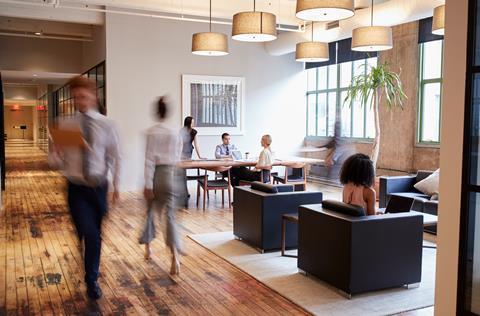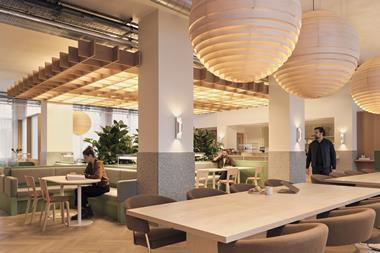It is interesting to see big corporations giving up headquarters in exchange for flexible working solutions, most notably the recent news that Currys has said goodbye to a fixed office in exchange for providing its 1,400 employees with all-access WeWork passes across 50 locations.

Currys say its motivation behind the move is not only to pay lip service to hybrid working post-pandemic but to demonstrate that it is listening to employees’ desires. It is a common trend – according to Upsuite, large corporations make up 25% of WeWork memberships across the board.
At SHB, we have seen a more than 400% increase in serviced deals this year compared with 2021, with 26% of those deals being larger companies moving to flexible options.
Aside from the benefit of allowing staff to work from many locations, flexible workspace has long been renowned for its creative and collaborative design. Historically, larger firms such as HSBC have moved their more creative departments such as tech and R&D from Canary Wharf and into flexible workspaces for this reason.
There has been a significant increase in demand for higher-quality flexible workspaces, as companies no longer require fixed desks for all employees. The move to hybrid working means companies can downsize and invest savings made in premium workspaces with improved amenities in a bid to encourage workers back into city centres.
Added benefits
Many employers have been hesitant to demand that workforces return to a physical office after two years of working from home for fear of an uprising. We have seen a change of approach from leaders, as companies look to entice employees back with added benefits rather than dictate where they need to be and when.
It is reasonable to believe that this is a result of employers being reluctant to lose staff after ‘the Great Resignation’, instead choosing to lure them away from their home comforts with all-singing, all-dancing benefits found in newer flexible workspaces, such as cinema rooms, Peloton studios, bars, restaurants and roof terraces.

It is worth noting that the increasing popularity of flexible workspace is not new. It is a trend that has been gaining momentum for a decade, as companies enjoy the luxuries of shorter move-in times and flexible leases.
So far, the only real hurdle for flex space has been the impact of several lockdowns as city centres became ghost towns.
On the flipside, when we see uncertainty in the market, we see the flex space flourish as companies look to make themselves as agile as possible. There is no doubt the popularity of flex space would have continued to rise year on year; it has merely been accelerated by the pandemic.
There is perhaps some confusion among companies new to the flexible workspace market, as people are reluctant to pay ‘full-time rent’ for a space they are utilising only 20% to 30% of the week. With this, a new trend in enquiries has arisen as more people look for the option of an ‘office share’ – think private office on a flexible lease shared with another company on different days of the week. If this continues, landlords and occupiers will need to find a way to come to an agreement on a balance between usage and cost.
Based on these trends, there is no doubt we will see more large corporations move to flexible working. However, with this surge in demand, will there be enough flexible office space to meet the need? Will overcrowded workspaces have a negative impact on the very spaces they are meant to be creating? Only time will tell.
Nicki Mayle is director of flexible workspace advisory at SHB






























No comments yet